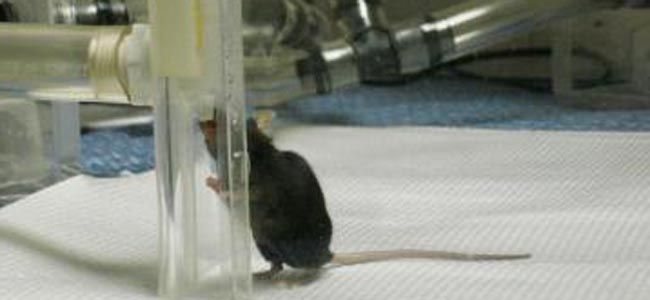Mice Learn to Sniff Out Bird Flu

Mice in a Pennsylvania lab recently passed a significant, if potentially unpleasant, smell test when they learned to detect the odor of bird flu infection in duck droppings.
This feat builds on previous evidence that animals can sniff out disease, and it raises hopes that trained animals — most likely dogs rather than mice — could be used to detect the presence of bird flu among wild ducks, geese and other birds.
When it comes to odor, technology cannot accomplish what the noses of mice, dogs or even humans can, according to study researcher Bruce Kimball of the U.S. Department of Agriculture.
"Our instrumentation is not as fine-tuned as an animal's nose. We have a really hard time sifting through all the data we can collect and finding important components to an odor, whereas animals have been doing that for eons," Kimball told LiveScience. "It's kind of a logical place to start."
The smell of sickness
In the past, human doctors used their noses as diagnostic tools, and the practice is still alive in a limited form, said study researcher Pamela Dalton, an olfactory scientist at the Monell Chemical Senses Center in Philadelphia, where Kimball is based.
For example, Dalton said, emergency responders can identify an unconscious person as a diabetic suffering from ketoacidosis, rather than as someone who drank too much alcohol, by the sweet, fruity smell on the person's breath. (Ketoacidosis is a serious complication of diabetes that occurs when the body produces very high levels of blood acids called ketones, according to the Mayo Clinic.)
Sign up for the Live Science daily newsletter now
Get the world’s most fascinating discoveries delivered straight to your inbox.
Kimball and colleagues at Monell, an independent scientific institute, trained mice to tell the difference between droppings from an infected duck and a healthy duck. In training sessions, the mice correctly identified the infected droppings more than 90 percent of the time. Later, in unrewarded trials, the mice identified the infected droppings 77 percent of the time.
A suite of chemicals is likely to be responsible for the odor that the mice detected, according to Kimball.
In a similar study published in 2002, researchers at Monell trained mice to detect mouse mammary tumor virus in the odor of infected mice, and in the odor of their urine, while those mice were still tumor-free.
In the cases of both viruses, it was clear the trained mice could detect the disease, but it was not clear what they were smelling. The researchers speculated that disruptions to the immune systems of the infected mice produced the odor.
"Mouse urine is probably one of the most complex chemical soups you can imagine; it contains hundreds and hundreds of different chemicals," said Dalton, who was not involved in the mammary tumor virus study. "But some of these compounds that are probably potent signals to the mouse appear at such low concentrations" that they are difficult to detect using conventional instruments.
This is where animals – even humans, with their inferior smell-sensing equipment – have an advantage, because they can hone in on small concentrations of chemicals with biological significance, she said.
In the wild
Currently, surveillance for bird flu among wild bird populations relies on five methods, each with drawbacks, according to Thomas DeLiberto, national wildlife disease coordinator for Wildlife Services within the USDA.
One of the most important techniques involves finding dead or sick birds and testing them for bird flu.
"The problem with that method is it is very hard to find sick and dead birds," DeLiberto said. He added that a lot of things besides influenza can kill them.
Although still far off, dogs trained to sniff out bird flu could streamline detection among wild birds, said DeLiberto, who foresees taking a dog to an area and, if the dog smells bird flu, collecting samples for testing back in a laboratory. No samples would be collected when the dog didn’t detect bird flu.
"It would much more efficiently allow us to target our sampling to those high-risk areas where it might be present," he said. "That's the basic principle that we are shooting for."
Kimball presented his research at the American Chemical Society's national meeting this week.












